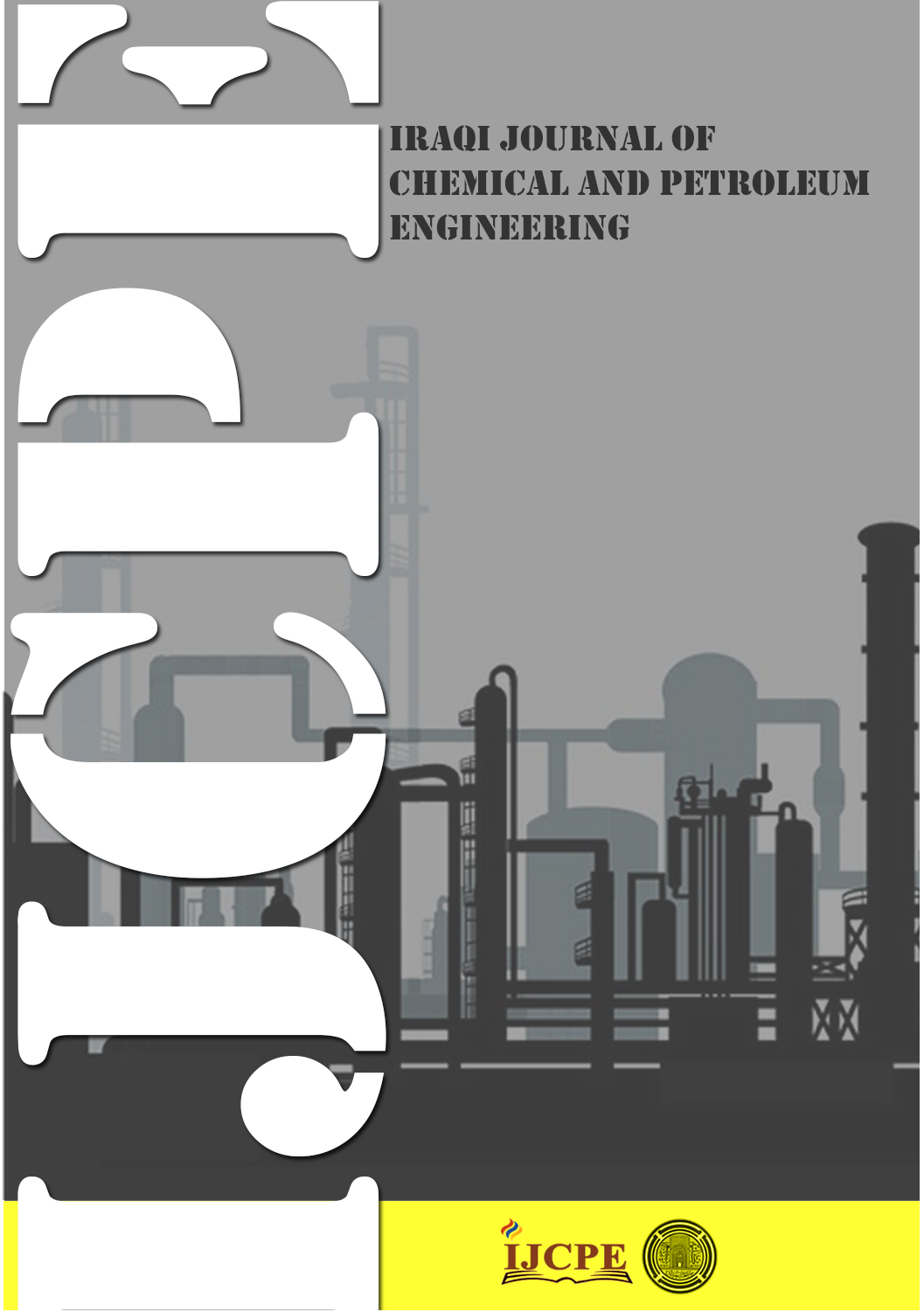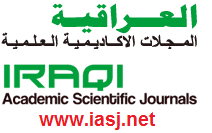Studying the chromatographic separation of caffeine, theophylline, and theobromine
DOI:
https://doi.org/10.31699/IJCPE.2025.2.15Keywords:
HPLC; Mobile phase; Stationary phase; Retention time; ResolutionAbstract
Theobromine, theophylline, and caffeine retention times in a C18 HPLC column (stationary phase) were investigated as a function of mobile phase flow rate, mobile phase composition, and column temperature. When the mobile phase flow rate increased from 0.1 to 1 mL/min and the methanol concentration increased from 5 to 30%, the retention time and peak width of these three compounds were found to be reduced. While there was a small influence of increasing the mobile phase flow rate on the resolution, decreasing the methanol concentration in the mobile phase considerably reduced the resolution. In addition, the mobile phase flow rate and composition were determined to have a more significant impact than the column temperature. According to the findings, theobromine, theophylline, and caffeine were most effectively separated by liquid chromatography at a flow rate of 0.5 mL/min with a mobile phase methanol concentration of 15%.
Received on 06/04/2025
Received in Revised Form on 10/06/2025
Accepted on 10/06/2025
Published on 30/06/2025
References
[1] S. Meirinho, M. Rodrigues, A. Fortuna, A. Falcão, G. Alves, “Liquid chromatographic methods for determination of the new antiepileptic drugs stiripentol, retigabine, rufinamide and perampanel: A comprehensive and critical review”, Journal of Pharmaceutical Analysis, 11, 2021, 405–421. https://doi.org/10.1016/j.jpha.2020.11.005
[2] A.J.H. Smit, “Chromatography. A Review of Principles and Applications.”, Journal of the American Chemical Society, 79, 1957, 5586. https://doi.org/https://doi.org/10.1021/ja01577a077
[3] S. Debnath, M. Das, S. Mondal, B.K. Sarkar, G. Babu, “Advances in chromatography: contemporary techniques and applications”, Essential Chem, 2, 2025 1–27. https://doi.org/https://doi.org/10.1080/28378083.2025.2466624
[4] W.J. Lough, I.W. Wainer, “High Performance Liquid Chromatography: Fundamental Principles and Practice”, cRc press, 1995.
[5] B.L. Reuhs, “High-Performance Liquid Chromatography”, in: Food Analysis, 2017: pp. 213–226. https://doi.org/10.1007/978-3-319-45776-5
[6] K.T. C, “Quality-control analytical methods: High-performance liquid chromatography”, International journal of pharmaceutical compounding, 8, 2004, 223–227.
[7] B.P. Ismail, S.S. Nielsen, “Basic principles of chromatography”, in: Food Analysis, 2017. https://doi.org/https://doi.org/10.1007/978-3-319-45776-5_36
[8] S.A.S. Al-azawi, “synthesis and study of some mixed ligand complexes of caffeine”, Baghdad Science Journal, 3, 2006, 314–320. https://doi.org/10.21123/bsj.2006.705
[9] D. Schieppati, N.A. Patience, S. Campisi, G.S. Patience, “Experimental methods in chemical engineering: High performance liquid chromatography—HPLC”, The Canadian Journal of Chemical Engineering, 99, 2021, 1663–1682. https://doi.org/10.1002/cjce.24050
[10] T. M, A. S, G. SJ, I. SS, H. A, “Ultra Performance Liquid Chromatography (UPLC) - A Review”, Austin Journal of Analytical and Pharmaceutical Chemistry, 2, 2015, 1–5.
[11] S.A. Alallaq, I.A. Murtadeh, A.M.S. Hatem, “Determination of Alkaloids Constituents in Some Ferns by Using High Performance Liquid Chromatography Technique – Iraq”, Iraqi Journal of Science, 64, 2023, 4340–4346. https://doi.org/10.24996/ijs.2023.64.9.3
[12] A.S. Ali, N.A. j. Imran, J.M. Mahmood, S.A. Jassim, “Optimum conditions for ascorbic acid determination in three Iraqi citrus using HPLC technique”, Baghdad Science Journal, 11, 2014, 1233–1242. https://doi.org/10.21123/bsj.2014.11.3.1233-1242
[13] N.I. Al‐Ani, H.N. Borazan, “Interactions of caffeine and theophylline with p‐cresol: UV studies”, Journal of Pharmaceutical Sciences, 67, 1978, 1381–1384. https://doi.org/10.1002/jps.2600671013
[14] K.F. Alsamarrai, S.T. Ameen, “Simultaneous Ratio Derivative Spectrophotometric Determination of Paracetamol, Caffeine and Ibuprofen in Their Ternary Form”, Baghdad Science Journal, 19, 2022, 1276–1285. https://doi.org/10.21123/bsj.2022.6422
[15] H.M. Jewely, T.Z. Abdul-Jalil, “Extraction, Isolation and Identification of Caffeic Acid and p-Coumaric acid from N-butanol Fraction of Iraqi Osteospermum ecklonis (F. Asteraceae)”, International Journal of Drug Delivery Technology, 12, 2022, 648–653. https://doi.org/10.25258/ijddt.12.2.31
[16] S.R. Hassan, A.M. Al-Yaqoobi, “Assessment of Ultrasound-Assisted Extraction of Caffeine and its Bioactivity”, Journal of Ecological Engineering, 24, 2023, 126–133. https://doi.org/10.12911/22998993/157540
[17] D. Wang, S.P. Hong, K.H. Row, “Solid extraction of caffeine and theophylline from green tea by molecular imprinted polymers”, Korean Journal of Chemical Engineering, 21, 2004, 853–857. https://doi.org/10.1007/BF02705530
[18] G.R. Walle, T. Suzuki, “Biosynthesis and Biodegradation of Caffeine, Theobromine, and tHeophylline in Coffea arabica L. Fruits”, Journal of Agricultural and Food Chemistry, 32, 1984, 845–848. https://doi.org/10.1021/jf00124a038
[19] H. Ashihara, A. Crozier, “Biosynthesis and Metabolism of Caffeine and Related Purine Alkaloids in Plants”, Advances in Botanical Research, 1999. https://doi.org/10.1016/S0065-2296(08)60228-1
[20] H. Ashihara, T. Suzuki, “DISTRIBUTION AND BIOSYNTHESIS OF CAFFEINE IN PLANTS”, Frontiers in Bioscience-Landmark, 9, 2004, 1864–1876. https://doi.org/10.2741/1367
[21] K.H.R. Algharrawi, R.M. Summers, M. Subramanian, “Production of theobromine by N-demethylation of caffeine using metabolically engineered E. coli”, Biocatalysis and Agricultural Biotechnology, 11, 2017, 153–160. https://doi.org/10.1016/j.bcab.2017.06.014
[22] K.H.R. Algharrawi, M. Subramanian, “Production of 7-methylxanthine from Theobromine by Metabolically Engineered E. coli”, Iraqi Journal of Chemical and Petroleum Engineering, 21, 2020, 19–27. https://doi.org/10.31699/ijcpe.2020.3.3
[23] K.H.R. Algharrawi, R.M. Summers, S. Gopishetty, M. Subramanian, “Direct conversion of theophylline to 3-methylxanthine by metabolically engineered E. coli”, Microbial Cell Factories, 14, 2015, 1–12. https://doi.org/10.1186/s12934-015-0395-1
[24] G. Vijayamma, S. Nirmala, “Development of eco-friendly UPLC methods for metformin and empagliflozin by combining green chemistry with analytical quality by design”, Acta Chromatographica, 2024, 1–11. https://doi.org/10.1556/1326.2024.01274
[25] S.S. Nielsen, Food Analysis - 4th Ed, 2010. https://doi.org/10.1007/978-3-319-45776-5
[26] P.M. Finglas, R.M. Faulks, “The HPLC analysis of thiamin and riboflavin in potatoes”, Food Chemistry, 15, 1984, 37–44. https://doi.org/10.1016/0308-8146(84)90037-2
[27] S. Amanipour, H. Rostampour, A. Nezamzadeh Ejhieh, “A Validated Reversed-Phase HPLC Method Toward Quantification of Some Water-Soluble Vitamins and Preservatives in Pharmaceutical Samples”, Iranian Journal of Chemistry and Chemical Engineering, 42, 2023, 3398–3408. https://doi.org/10.30492/ijcce.2023.561171.5561
[28] E. Nemutlu, S. Kir, Ö. Özyüncü, M.S. Beksaç, “Simultaneous separation and determination of seven quinolones using HPLC: Analysis of levofloxacin and moxifloxacin in plasma and amniotic fluid”, Chromatographia, 66, 2007, 15–24. https://doi.org/10.1365/s10337-007-0292-9
[29] S.G. Armstrong, D.N. Leach, S.G. Wyllie, “The use of HPLC protein profiles in fish species identification”, Food Chemistry, 44, 1992, 147–155. https://doi.org/10.1016/0308-8146(92)90328-Y
[30] F.I. Al-Jenoobi, A. Ahad, G.M. Mahrous, M. Raish, M.A. Alam, A.M. Al-Mohizea, “A Simple HPLC-UV Method for the Quantification of Theophylline in Rabbit Plasma and its Pharmacokinetic Application”, Journal of Chromatographic Science, 53, 2015, 1765–1770. https://doi.org/10.1093/chromsci/bmv094
[31] M. Charehsaz, A. Gürbay, A. Aydin, G. Şahin, “Simple, fast and reliable liquid chromatographic and spectrophotometric methods for the determination of theophylline in urine, saliva and plasma samples”, Iranian journal of pharmaceutical research, 13, 2014, 431–439.
[32] M. del R. Brunetto, L. Gutiérrez, Y. Delgado, M. Gallignani, A. Zambrano, Á. Gómez, G. Ramos, C. Romero, “Determination of theobromine, theophylline and caffeine in cocoa samples by a high-performance liquid chromatographic method with on-line sample cleanup in a switching-column system”, Food Chemistry, 100, 2007, 459–467. https://doi.org/10.1016/j.foodchem.2005.10.007
Downloads
Published
Issue
Section
License
Copyright (c) 2025 The Author(s). Published by College of Engineering, University of Baghdad.

This work is licensed under a Creative Commons Attribution 4.0 International License.













